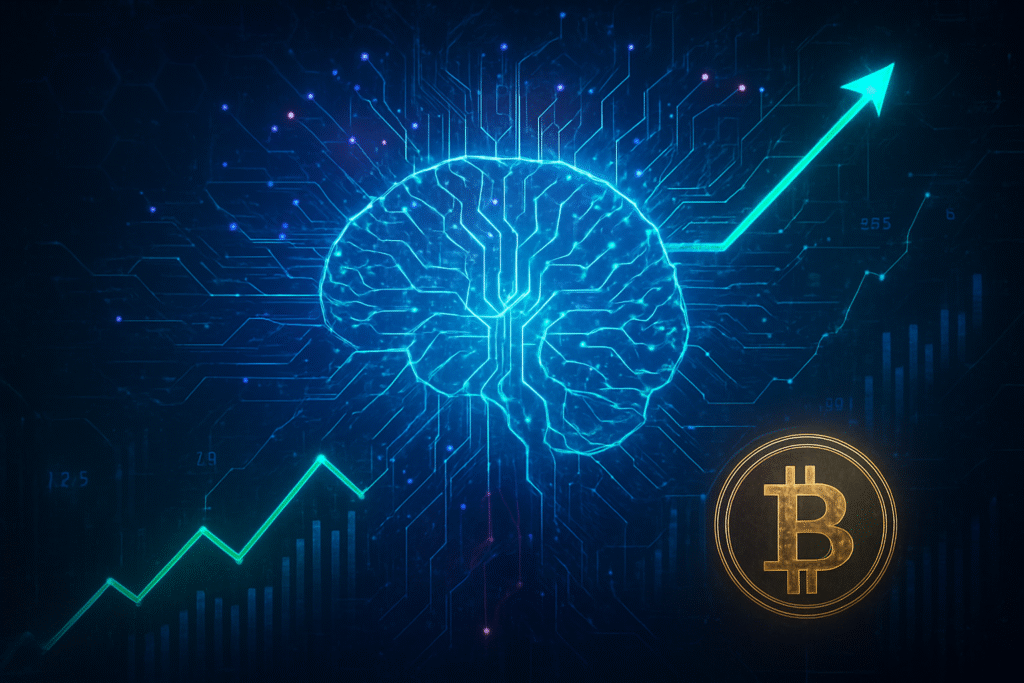
The relentless march of Artificial Intelligence (AI) innovation has become the undisputed engine of growth for global equity markets, fundamentally reshaping the landscape of technology stocks and influencing investment trends worldwide as of late 2025. From the soaring demand for advanced semiconductors to the pervasive integration of AI across industries, this technological revolution is not merely driving market exuberance but is establishing new paradigms for value creation and economic productivity.
This transformative period is marked by unprecedented capital allocation towards AI infrastructure, a surge in venture funding for generative AI, and the continued dominance of tech giants leveraging AI to redefine their market positions. While the rapid appreciation of AI-related assets has sparked debates about market valuations and the specter of a potential bubble, the underlying technological advancements and tangible productivity gains suggest a more profound and sustainable shift in the global financial ecosystem.
The AI Infrastructure Arms Race: Fueling a New Tech Supercycle
The current market surge is underpinned by a ferocious "AI infrastructure arms race," driving unprecedented investment and technological breakthroughs. At its core, this involves the relentless demand for specialized hardware, advanced data centers, and sophisticated cloud computing platforms essential for training and deploying complex AI models. Global spending on AI is projected to reach between $375 billion and $500 billion in 2025, with further growth anticipated into 2026, highlighting the scale of this foundational investment.
The semiconductor industry, in particular, is experiencing a "supercycle," with revenues expected to grow by double digits in 2025, potentially reaching $697 billion to $800 billion. This phenomenal growth is almost entirely attributed to the insatiable appetite for AI chips, including high-performance CPUs, GPUs, and high-bandwidth memory (HBM). Companies like Advanced Micro Devices (NASDAQ: AMD), Nvidia (NASDAQ: NVDA), and Broadcom (NASDAQ: AVGO) are at the vanguard, with AMD seeing its stock surge by 99% in 2025, outperforming some rivals due to its increasing footprint in the AI chip market. Nvidia, despite market fluctuations, reported a 62% year-over-year revenue increase in Q3 fiscal 2026, primarily driven by its data center GPUs. Memory manufacturers such as Micron Technology (NASDAQ: MU) and SK Hynix are also benefiting immensely, with HBM revenue projected to surge by up to 70% in 2025, and SK Hynix's HBM output reportedly fully booked until at least late 2026.
This differs significantly from previous tech booms, where growth was often driven by broader consumer adoption of new devices or software. Today, the initial wave is fueled by enterprise-level investment in the very foundations of AI, creating a robust, capital-intensive base before widespread consumer applications fully mature. The initial reactions from the AI research community and industry experts emphasize the sheer computational power and data requirements of modern AI, validating the necessity of these infrastructure investments. The focus is on scalability, efficiency, and the development of custom silicon tailored specifically for AI workloads, pushing the boundaries of what was previously thought possible in terms of processing speed and data handling.
Competitive Dynamics: Who Benefits from the AI Gold Rush
The AI revolution is profoundly impacting the competitive landscape, creating clear beneficiaries among established tech giants and presenting unique opportunities and challenges for startups. The "Magnificent Seven" mega-cap technology companies – Apple (NASDAQ: AAPL), Alphabet (NASDAQ: GOOGL), Amazon (NASDAQ: AMZN), Meta Platforms (NASDAQ: META), Microsoft (NASDAQ: MSFT), Nvidia (NASDAQ: NVDA), and Tesla (NASDAQ: TSLA) – have been instrumental in driving market performance, largely due to their aggressive AI strategies and significant investments. These firms account for a substantial portion of the S&P 500's total market capitalization, underscoring the market's concentration around AI leaders.
Microsoft, with its deep integration of AI across its cloud services (Azure) and productivity suite (Microsoft 365 Copilot), and Alphabet, through Google Cloud and its extensive AI research divisions (DeepMind, Google AI), are prime examples of how existing tech giants are leveraging their scale and resources. Amazon is heavily investing in AI for its AWS cloud platform and its various consumer-facing services, while Meta Platforms is pouring resources into generative AI for content creation and its metaverse ambitions. These companies stand to benefit immensely from their ability to develop, deploy, and monetize AI at scale, often by offering AI-as-a-service to a broad client base.
The competitive implications for major AI labs and tech companies are significant. The ability to attract top AI talent, secure vast computational resources, and access proprietary datasets has become a critical differentiator. This creates a challenging environment for smaller startups, which, despite innovative ideas, may struggle to compete with the sheer R&D budgets and infrastructure capabilities of the tech behemoths. However, startups specializing in niche AI applications, foundational model development, or highly optimized AI hardware still find opportunities, often becoming attractive acquisition targets for larger players. The potential for disruption to existing products or services is immense, with AI-powered tools rapidly automating tasks and enhancing capabilities across various sectors, forcing companies to adapt or risk obsolescence.
Market positioning is increasingly defined by a company's AI prowess. Strategic advantages are being built around proprietary AI models, efficient AI inference, and robust AI ethics frameworks. Companies that can demonstrate a clear path to profitability from their AI investments, rather than just speculative potential, are gaining favor with investors. This dynamic is fostering an environment where innovation is paramount, but execution and commercialization are equally critical for sustained success in the fiercely competitive AI landscape.
Broader Implications: Reshaping the Global Economic Fabric
The integration of AI into global equities extends far beyond the tech sector, fundamentally reshaping the broader economic landscape and investment paradigms. This current wave of AI innovation, particularly in generative AI and agentic AI, is poised to deliver substantial productivity gains, with academic and corporate estimates suggesting AI adoption has increased labor productivity by approximately 30% for adopting firms. McKinsey research projects a long-term AI opportunity of $4.4 trillion in added productivity growth potential from corporate use cases, indicating a significant and lasting economic impact.
This fits into the broader AI landscape as a maturation of earlier machine learning breakthroughs, moving from specialized applications to more generalized, multimodal, and autonomous AI systems. The ability of AI to generate creative content, automate complex decision-making, and orchestrate multi-agent workflows represents a qualitative leap from previous AI milestones, such as early expert systems or even the deep learning revolution of the 2010s focused on perception tasks. The impacts are wide-ranging, influencing everything from supply chain optimization and drug discovery to personalized education and customer service.
However, this rapid advancement also brings potential concerns. The concentration of AI power among a few dominant tech companies raises questions about market monopolization and data privacy. Ethical considerations surrounding AI bias, job displacement, and the potential for misuse of powerful AI systems are becoming increasingly prominent in public discourse and regulatory discussions. The sheer energy consumption of large AI models and data centers also presents environmental challenges. Comparisons to previous AI milestones reveal a faster pace of adoption and a more immediate, tangible impact on capital markets, prompting regulators and policymakers to scramble to keep pace with the technological advancements.
Despite these challenges, the overarching trend is one of profound transformation. AI is not just another technology; it is a general-purpose technology akin to electricity or the internet, with the potential to fundamentally alter how businesses operate, how economies grow, and how societies function. The current market enthusiasm, while partially speculative, is largely driven by the recognition of this immense, long-term potential.
The Horizon Ahead: Unveiling AI's Future Trajectory
Looking ahead, the trajectory of AI development promises even more transformative changes in the near and long term. Expected near-term developments include the continued refinement of large language models (LLMs) and multimodal AI, leading to more nuanced understanding, improved reasoning capabilities, and seamless interaction across different data types (text, image, audio, video). Agentic AI, where AI systems can autonomously plan and execute complex tasks, is a rapidly emerging field expected to see significant breakthroughs, leading to more sophisticated automation and intelligent assistance across various domains.
On the horizon, potential applications and use cases are vast and varied. We can anticipate AI playing a more central role in scientific discovery, accelerating research in materials science, biology, and medicine. Personalized AI tutors and healthcare diagnostics could become commonplace. The development of truly autonomous systems, from self-driving vehicles to intelligent robotic assistants, will continue to advance, potentially revolutionizing logistics, manufacturing, and personal services. Furthermore, custom silicon designed specifically for AI inference, moving beyond general-purpose GPUs, is expected to become more prevalent, leading to even greater efficiency and lower operational costs for AI deployment.
However, several challenges need to be addressed to realize this future. Ethical AI development, ensuring fairness, transparency, and accountability, remains paramount. Regulatory frameworks must evolve to govern the safe and responsible deployment of increasingly powerful AI systems without stifling innovation. Addressing the energy consumption of AI, developing more sustainable computing practices, and mitigating potential job displacement through reskilling initiatives are also critical. Experts predict a future where AI becomes an even more integral part of daily life and business operations, moving from a specialized tool to an invisible layer of intelligence underpinning countless services. The focus will shift from what AI can do to how it can be integrated ethically and effectively to solve real-world problems at scale.
A New Era of Intelligence: Wrapping Up the AI Revolution
In summary, the current era of AI innovation represents a pivotal moment in technological history, fundamentally reshaping global equities and driving an unprecedented surge in technology stocks. Key takeaways include the critical role of AI infrastructure investment, the supercycle in the semiconductor industry, the dominance of tech giants leveraging AI, and the profound potential for productivity gains across all sectors. This development's significance in AI history is marked by the transition from theoretical potential to tangible, widespread economic impact, distinguishing it from previous, more nascent stages of AI development.
The long-term impact of AI is expected to be nothing short of revolutionary, fostering a new era of intelligence that will redefine industries, economies, and societies. While concerns about market valuations and ethical implications persist, the underlying technological advancements and the demonstrable value creation potential of AI suggest a sustained, transformative trend rather than a fleeting speculative bubble.
What to watch for in the coming weeks and months includes further announcements from major tech companies regarding their AI product roadmaps, continued investment trends in generative and agentic AI, and the evolving regulatory landscape surrounding AI governance. The performance of key AI infrastructure providers, particularly in the semiconductor and cloud computing sectors, will serve as a bellwether for the broader market. As AI continues its rapid evolution, its influence on global equities will undoubtedly remain one of the most compelling narratives in the financial world.
This content is intended for informational purposes only and represents analysis of current AI developments.
TokenRing AI delivers enterprise-grade solutions for multi-agent AI workflow orchestration, AI-powered development tools, and seamless remote collaboration platforms.
For more information, visit https://www.tokenring.ai/.






